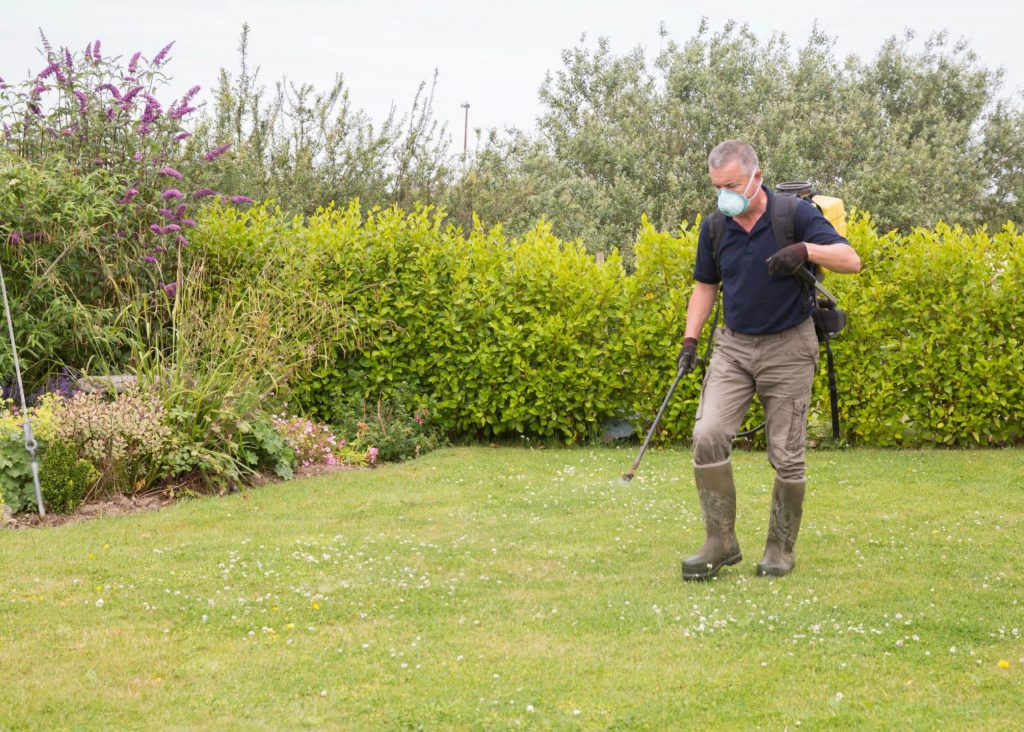What are Perennial Weeds?
Perennial Weeds are longer lived plants that can survive winter or regrow from roots, rhizomes or tubers in spring after a period of dormancy. Many weeds that grow from seed ...

 In recent years, weed and feed products have become increasingly popular amongst home gardeners. These products promise to kill weeds while simultaneously fertilising your lawn. However, weed and feed products are not everything they appear to be, and there are several reasons why you should avoid using them
In recent years, weed and feed products have become increasingly popular amongst home gardeners. These products promise to kill weeds while simultaneously fertilising your lawn. However, weed and feed products are not everything they appear to be, and there are several reasons why you should avoid using them
In this article, we’ll look at how weed and feed works, and reasons why you should consider other methods for managing weeds in your lawn.
 Weed and feed is a popular type of lawn care product that combines a broadleaf herbicide and fertiliser into a single formulation. To use it, you simply attach the bottle to your garden hose and spray the solution onto your lawn. The main purpose of weed and feed is to kill unwanted weeds while simultaneously providing a boost for your lawn.
Weed and feed is a popular type of lawn care product that combines a broadleaf herbicide and fertiliser into a single formulation. To use it, you simply attach the bottle to your garden hose and spray the solution onto your lawn. The main purpose of weed and feed is to kill unwanted weeds while simultaneously providing a boost for your lawn.
Due to their convenience and cost effectiveness, weed and feed products are often seen as an ideal solution for maintaining healthy and vibrant lawns. The two-in-one component makes it easy to take care of both weeds and your grass at the same time, saving you time and effort.
The mechanism of action for weed and feed is simple. When weed and feed is applied to your lawn, the active ingredients in the formulation are absorbed by the leaves of the weed, eventually killing the weed. At the same time, the fertiliser is designed to work on your grass, quickly releasing nutrients into the soil to give your grass a quick boost.
Like a lot of dual-action products, weed and feed is not optimised to give great results. This is because the concentrations of the active ingredients must be kept low so that they can be applied by anyone with little to no risk of damaging a lawn, as well as making the product a very inexpensive item to purchase.
The active ingredient of the herbicide component is Dicamba. At low concentrations, Dicamba is not especially effective on most broadleaf weeds, and requires multiple applications to see results. It also can’t be used on soft leaf Buffalo lawns – one of the most popular lawns in Australia, which limits its use on domestic lawns.
Weed and Feed does very little to improve the health of your lawn. The fertiliser component is largely made up of nitrogen and iron, which helps to give grass a boost of colour. However, it lacks phosphorus and potassium, which are essential nutrients for root strength and plant development.
If you want to really enhance the health of your lawn, invest in a quality fertiliser that contains all the essential nutrients.
As well as being inefficient, weed and feed products have the potential to actually harm your lawn and surrounding environment.

Weed and feed is usually applied to the entire lawn, instead of just the areas with weed growth.
With broadleaf weeds usually only occupying a small percentage of your lawn – typically 5-10% – this means that herbicides are being applied where they aren’t needed, exposing your grass to potentially harmful chemicals.
Quick release fertilisers, such as those used in weed and feed, apply a quick, heavy dose of nutrients to your lawn. If this dose exceeds the needs of the lawn, the excess tends to run off into local water sources, like ponds or rivers. This can lead to the creation of algal blooms in nearby waterways, smothering aquatic life. Therefore, even if you’re feeding your grass for its own good, you may actually be harming local ecosystems by over-applying nutrients.
Over-use of products such as weed and feed can negatively impact the health of your soils by killing off beneficial microbes and fungi, and reducing the overall health of your lawn.
Better results are achieved with the targeted use of herbicides, where chemicals are used to address a specific problem, rather than as a broad spectrum application. This means that beneficial organisms are less likely to be destroyed, and you can build a healthier, more resistant turf.
A quality Broadleaf Herbicide can be purchased at myhomeTURF’s online store. Please adhere to manufacturer’s instructions before application.

Bow and Arrow is an effective broadleaf liquid herbicides suitable for use on Zoysia, Kikuyu, Couch and Buffalo lawns. It can be used to treat White Clover, Plantain, Capeweed, Cat’s Ear, Bindii, Cudweed and Creeping Oxalis.
SHOP NOWWeed and feed products may seem like a good idea, saving time and money in the fight against weeds in your lawn. However, they aren’t as effective as they first seem to be, requiring multiple applications to manage weeds, and lacking some vital ingredients for plant health. In addition, weed and feed products pose risks to the health of your lawn, and the environment. Weed and feed products typically only provide temporary relief from weeds, in order to achieve long-term results, it is advisable to choose other methods of weed control and fertiliser.
For a range of leading lawn care products visit the myhomeTURF online store.